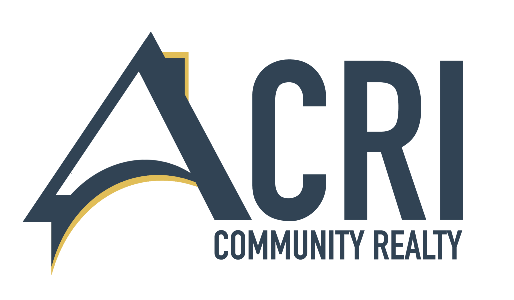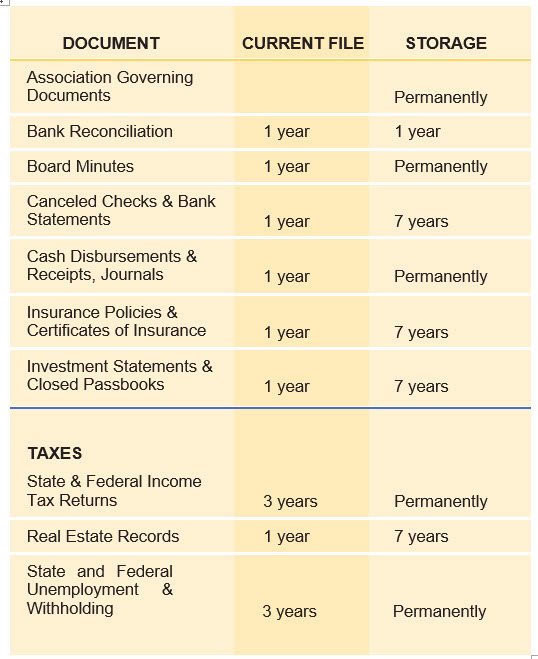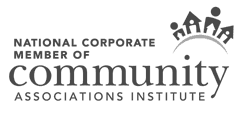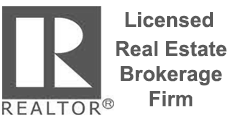To understand HOA management, you must first know the meaning of HOA. It stands for HomeOwners Association. These are organizations formed within a planned community, subdivision, or condominium. HOAs manage the day-to-day operations of a community, ratify and enforce rules for residents and properties, and have the general goal of maintaining property values.
An HOA consists of members of the community. From this community, volunteer members for positions on the HOA board of directors. This HOA board is responsible for all the operations, including financial management, collection, vendor coordination and payment, insurance, maintenance, and more.
HOA management, on the other hand, refers to the governance and handling of a homeowners association. It’s something the HOA board does on a daily basis. However, many HOA boards have difficulty keeping up with the demands of managing a community. Since most boards consist of volunteers, they often lack the time to accomplish all the tasks involved in managing an HOA.
This is where an HOA management company comes in – ACRI.
We provide various services to homeowners’ associations. We oversee the operations of an HOA and supervise the maintenance of amenities and common areas. Basically, a homeowners association management company like ACRI exists to make the lives of HOA board members easier by helping fulfill their duties and responsibilities.
More specifically, we execute the following duties:
- Attend and facilitate board meetings
- Create meeting agendas
- Send meeting notices
- Take minutes of the meeting
- Provide advice to board members
- Solicit bids from vendors
- Inspect the community
- Track maintenance or service requests
- Oversee maintenance and repairs
- Organize community events and functions
- Collect dues and assessments
- Manage payables
- Send invoices
- Manage insurance
- Prepare monthly financial statements and other reports
- Provide legal advice
- ACRI employees have years of experience and a diverse set of experts at our disposal. Therefore, we’re fully equipped to handle the various tasks associated with an HOA, whether that means collecting dues or planning the annual budget.
A strong board member embodies the following qualities:
- Good character
- Strong integrity
- Calm judgment
- Willingness to serve
- Committed to the best interests of the community as a whole
- Relevant experience or background
- Previous volunteer service
- Strong “people skills”
Here are some signs to watch out for that may indicate that a board member is not fit for the position they are serving:
- A Dictator who is unable to put the welfare of the community first
- Works behind the board to run things his or her way
- Impulsive or quick tempered
- Has a personal or hidden agenda
- Puts individual interests first
- Little or no experience in management, leadership, or service and is unable to work with others for the common good.
Boards vary in size, but most are comprised of five to seven elected homeowners from the community. Among themselves, they appoint officers. There are typically three primary positions on the Board – President, Secretary, and Treasurer. Decisions are made by the board as a group, not by individuals or by just the officers.
You might be wondering with all of the responsibility, how you can possibly succeed with such a challenging assignment? Here are five common traits to having a successful term when serving on a board.
- Personal Preference – You can start by putting your personal preferences and circumstances aside. When you make decisions as a board member, you have an obligation to work in the best interest of the entire community, regardless of how they affect you personally. Don’t allow personality differences to interfere with the work of the board. Be cooperative, positive, and make every effort to stay focused on the needs of the community.
- Education – Educating yourself should be a high priority. Part of learning how to be a good board member will come from trial and error; but, you can reduce the errors and the time it takes you to get up to speed by attending seminars, reading books, networking with community association board members, asking questions of your manager, accountant, or attorney, downloading free materials from the web, and much more.
- Process – Knowing, understanding and applying the differences between the roles of the board members and the managers is imperative. Boards set policy and make policy decisions. Managers implement the board’s directives and take care of operations.
- Stand United – Once the board makes a decision, stand behind it and make every effort to see it succeed—even if you voted against it.
- Be Reasonable – Although boards have a big responsibility, they needn’t be overzealous or inflexible to fulfill it. Avoid snap decisions, act rather than react, and deal with real problems, not nuisance situations.
General Overview
Different situations will determine which role the association President assumes. Sometimes the President must set aside other roles, such as neighbor or friend, to accomplish a task or make a decision, community association presidents are required to fulfill many roles, but the primary roles are leadership.
Association Presidents gain their authority to lead a community association from state law — generally called the Common Interest Ownership Act.
The President should have a basic understanding of the law pertaining to community associations, as well as the association’s governing documents — the Declaration (also called Covenants, Conditions, and Restrictions—CC&Rs), Bylaws (which address the association’s structure, the board, the officers, definition of a quorum, ability to enter into contracts, etc.), and the Rules and Regulations (the operational and behavioral laws that apply to association residents).
Therefore, Board Presidents must perceive the association as both a community and a business, as well as operate on the democratic principles of government.
The President’s Roles and Responsibilities
- Oversee Operations
- Association presidents must adhere to budgets, formulate and enforce rules and policies, conduct meetings, prepare agendas, and work with committees.
- Speak for the Board and the Association
- The president is the official spokesperson for the board—to association members, the community manager (or management company), vendors, the press, and the greater community.
- Seek Knowledge
- Learning how to be president of a community association generally comes from on-the-job training. However, educational resources for association volunteers are available in books, seminars, periodicals, and networking offered by groups that serve common-interest communities, such as Community Associations Institute and its chapters.
- Work with Volunteers
- The president is the leader of the board, a body that typically includes:
- The Vice President—who substitutes for the president in his or her absence
- The Secretary—the official recorder of the association’s activities
- The Treasurer—the chief financial officer of the association
- It’s in the president’s best interest to encourage the officers’ participation in association affairs and to develop their skills as team members. The president should also attempt to identify and train potential association leaders, encourage them to join the board, and orient them to their new responsibilities.
- Work with Professionals
- Many associations employ either a community management company or a professional manager who directs association operations based on policy set by the board. The president is the liaison between the manager and the association. Seeking the services of an attorney, architect, or insurance professional is in the best interests of the association. Experts provide information and expertise that board members don’t normally have. For example:
- Reviewing legal contracts requires advice from an attorney.
- Managing reserve funds requires guidance from an accountant or investment advisor.
- Many associations employ either a community management company or a professional manager who directs association operations based on policy set by the board. The president is the liaison between the manager and the association. Seeking the services of an attorney, architect, or insurance professional is in the best interests of the association. Experts provide information and expertise that board members don’t normally have. For example:
The position of association President is not for everyone. Fortunately, every President has a Board from which he or she can draw support. As long as the members recognize the importance of the community that unifies them, the role of President can be very satisfying. The Board President has a fiduciary obligation to protect the community association.
Board members (and, in particular, the President, and Treasurer) have a fiduciary obligation to protect the community association by:
- Adequately funding reserve accounts and educating homeowners about the value and purpose of having capital assets.
- Collecting fees from homeowners.
- Seeking the advice of a certified insurance specialist and protecting the association with appropriate levels of insurance coverage.
General Overview
The Secretary is responsible for preserving the association’s history, maintaining its records, and protecting it from liability.
The secretary should be efficient, well organized, and have a commitment to the future of the association. Associations with a professional manager can ask the manager to perform some of the secretarial tasks.
The Secretary’s Roles and Responsibilities
- Record Minutes for Association Meetings
- There are many types of meetings held by an association for which minutes must be recorded.
- Board meetings
- Special meetings
- Annual meetings
- Committee meetings
- There are many types of meetings held by an association for which minutes must be recorded.
- Guidelines for Recording Minutes
- Record the association’s actions and record why they were made.
- Preserve board members’ voting.
- State the authority by which directors take a certain action and cite the documents granting that process.
- Record all matters brought before the board, whether adopted, dismissed without discussion or vote, rejected, deferred, tabled, or simply presented as information.
- Remember that the association’s minutes are official records and admissible as evidence in a court of law.
- Standardize Language Used for Recurring Functions
- Certain functions occur frequently in all meetings. Recording these will be easier if the secretary develops standardized language to cover functions that occur during every meeting.
- Recurring language could be used for the
- Call to order by the presiding officer
- Proof of meeting notice or waiver of meeting notice
- Presence, or lack, of a quorum
- Reading and approval of the previous meeting minutes
- Reading and acceptance of various reports
- Unfinished business
- New business Adjournment
- Announce Meetings and Prepare Meeting Agenda
- Notifying Board and association members of meetings are required by law.
- How and when notice is given is typically stated in the association’s governing documents. Agendas are essential to the success not only of the meeting but of the association as well.
- Maintain Association Records
- Store and retrieve association documents as required by declarations.
- Devise an effective filing system, and keep files safe and accessible.
- Identify and categorize all current and stored documents.
- Prepare and maintain a retention schedule for document disposal.
- Witness and Verify Signatures
- Many associations have policies to safeguard assets that require two signatures on checks or have a witness to verify signatures. Generally, this responsibility falls to the secretary.
- Maintain Lists
- The secretary is responsible for maintaining lists of all association board and committee members, officers, and members. The list must include their current mailing address and voting percentages.
- Verify Proxies
- The Secretary accepts and verifies proxies for annual or special membership meetings. They are also responsible to ensure that proxies and ballots are kept in the association’s records.
- File Forms with State Agencies
- The secretary is responsible for filing specific forms with state agencies. These might include employment forms, incorporation documents, and other official records of the association.
- Manage Correspondence
- Any agreement or coordination that occurs with the association should be directed through the Secretary.
- While the President is the voice of the board, the Secretary acts as the heart of the Association Board
- The position of association Secretary is not for everyone. Thankfully, every Secretary has a Board from which he or she can draw support.
General Overview
The association treasurer is responsible for maintaining the finances and ensuring the financial stability of the association. He or she is the financial voice of the Board and liaison to auditors, CPAs, brokers, agents, and bankers. This includes a number of duties and responsibilities.
The Treasurer’s Roles and Responsibilities
- Prepare the Budget
- The most important responsibility the treasurer has is preparing the annual operating budget.
- Maintain Association Accounts
- The association’s documents and bylaws specify a number of financial responsibilities that the treasurer must oversee.
- Route correspondence to appropriate association representatives—manager, office, board member, committee chair, etc.
- Ensure that tone, form, and spelling of all association correspondence reflect positively on the association.
- Maintaining adequate insurance coverage.
- Keeping financial records.
- Investing association funds.
- Collecting assessments and delinquencies.
- Reserving funds for future needs.
- Filing income tax returns.
- Understand Basic Financial Statements
- The treasurer must understand the basic components and definitions of the financial statement:
- Assets
- Liabilities
- Members’ equity: reserves and operating fund balance
- In addition, it would be advantageous to the association if the treasurer also had an understanding of the other components of the financial statement such as:
- Initial working capital
- Special project funds
- Income statement
- Statement of cash flow
- The treasurer must understand the basic components and definitions of the financial statement:
- Report to the Board
- The treasurer should report at regular board meetings on the state of the association’s finances. Reports should be based upon factual information compiled from statements and receipts. This information may also be maintained and provided by the property manager or finance committee.
- Balance sheet
- Statement of income
- Cash receipts and cash disbursements activity
- Unit owner balances
- General ledger activity and journal entries
- Schedule of accounts payable
- Bank statements and bank reconciliations
- The treasurer should report at regular board meetings on the state of the association’s finances. Reports should be based upon factual information compiled from statements and receipts. This information may also be maintained and provided by the property manager or finance committee.
- Implement a Reserve Program
- Reserves are a primary responsibility of the treasurer and the board of directors. The treasurer must:
- Conduct reserve studies.
- Update the reserve study yearly.
- Develop and implement a reserve funding schedule.
- Fund the reserve accounts accordingly to meet goals.
- Reserves are a primary responsibility of the treasurer and the board of directors. The treasurer must:
- Select a CPA and conduct an Audit
- Ensuring that the association is working with a qualified certified public accountant (CPA) is one of the treasurer’s important duties.
- CPAs with community association experience are better equipped to provide the expertise you need. The treasurer should work with the CPA to perform an annual audit. An annual audit is a very important document for a community association, the management company, and the board. Even if your association uses the services of a CPA, or if your treasurer is a CPA, all board members—especially in self-managed associations—should have a basic understanding of community association finances.
- Bookkeeping
- In smaller, self-managed communities, the treasurer’s duties may include bookkeeping.
- Financial Liaison
- The treasurer is the liaison between the association board and finance committee, its subcommittees, and between the board and the members on financial matters. In addition, the treasurer is the liaison to reserve study engineers, bankers, CPAs, insurance agents, investment brokers, and auditors.
- Maintain Records
- The treasurer should make sure that important financial records are safely maintained in the proper location and for the appropriate length of time.
Just like the President, the Board Treasurer has a fiduciary obligation to protect the community association. The position of association Treasurer is not for everyone. Luckily, even the Treasurer has the Board to lean on for support. Whereas the President is the voice, and the Secretary is the heart, the Board’s Treasurer is the blood flow for the entire Association.
The image below outlines some of the industry standards for maintaining the Association’s financial records.
The Purpose of Board Meetings
- Set Agenda
- Review Plans
- Resolve Issues
- Listen to Homeowner Concerns
- Plan for the Future
- Vote on business discussed in executive session
Executive sessions may occur, however, the board should only convene in executive sessions to discuss pending litigation, personnel issues, or contract negotiations.
- Elect officers
- Deliver committee reports to chairman
- Build community by bringing in neighbors feedback and show transparency
The Purpose of Special Meetings / Town Meetings
- Focus on one particular item of concerns
- Present sensitive or controversial matters to the homeowners
- Garner support for large projects or clarify unpopular rules and/or assessments
- Provide a structured venue in which residents can explore issues and express feedback
- Get resident feedback before the board takes place
- Reach consensus or resolve an ongoing issueGain valuable insights into the character and values of the homeowners
Board officials use tools and processes to assist in the organization of their meetings and to ensure they are satisfying any meeting requirements.
The parliamentary procedure is the body of rules, ethics, and customs governing board meetings. The use of the parliamentary procedure can be as formal or basic as the association wishes, as long as it provides sufficient structure to keep a meeting orderly, fair, and productive.
The Purpose of the Parliamentary Procedure
- Staying on the agenda plan
- Discussing one subject at a time
- Giving each participant a chance to speak
- Speaking only on the issue being presented
- Speaking only when recognized by the chairman
- Addressing questions and comments to the chairman
- Deciding issues through motions, seconds, and votes
Associations must also meet several important criteria before any business can be conducted at a meeting. In particular, the notification of members, meeting a quorum, and recording of actions taken – the minutes.
- Notifying Members – The law requires community associations to notify members of meetings—especially annual meetings. Keep notices brief, focused, and simple; issue them at the appropriate time in the proper manner.
- Achieve a quorum – Each association’s governing documents or state law specifies how many members constitute a quorum. Quorum size can vary from one association to the next. Board officials must sure that a quorum is present before calling any meeting to order.
- Record Meeting Results / Minutes – Minutes are the official record of decisions made at an association board or committee meeting.
Good meeting minutes will include
- Type of meeting: board, committee, regular, special
- Association name time, date, and place
- Attendees’ names
- Approval or correction of the previous minutes
- Officer and committee reports
- Motions and their outcomes—approved, denied, or tabled
- Adjournment time








